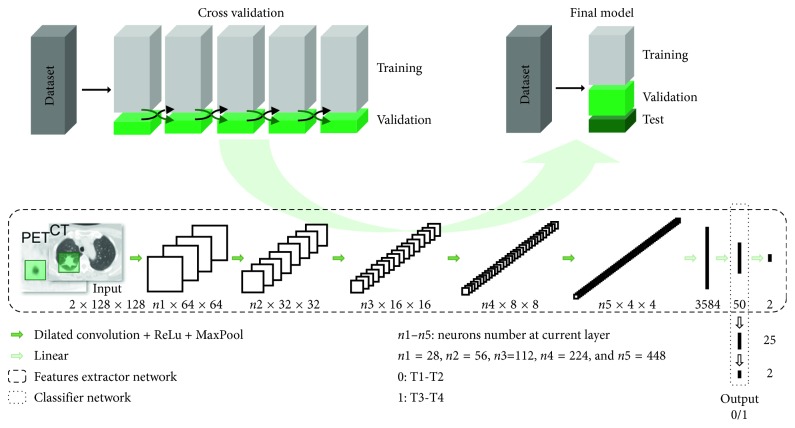Figure 1.
Study workflow and networks' architecture. The network (consisting of two neural networks, the feature extractor, and the classifier) was trained using a cross-validation strategy. The entire dataset was divided into 5 randomly chosen parts. At each training run, 4/5 of the dataset were used as a training set and the remaining 1/5 was used as the validation set. Subsequently, the final model network was adjusted and tested for performance using the dataset divided into three sets: training, validation, and test. In the feature extractor CNN, the input images, both PET and CT, were submitted to a series of convolutions producing a stack of feature maps containing low-level features, rectified linear units (ReLU), and max pooling layers that downsample the feature maps (MaxPool), to produce higher-level features. In the classifier network, these higher-level features are used to perform the final classification T1-T2 (output label 0) vs T3-T4 (output label 1).

